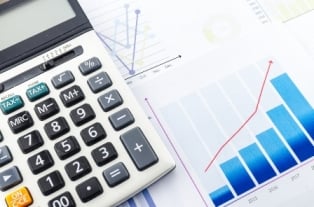The Fed’s decision to hike rates signals a cautiously optimistic outlook

Following a decision from the Fed to raise interest rates, a new report from TD Economics says that prospects for the US economy are improving.
“Even without a dose of fiscal stimulus, economic growth appears set to accelerate to 2.2% from the middling 1.6% rate it averaged in 2016,” said TD Bank Chief Economist Beata Caranci, who noted that details of tax or spending packages are still pending. While there seems to be strong conviction in Washington to reform an unfavourable corporate tax system, the bank is not factoring a fiscal boost in their forecast, owing to a clear risk of reform being not being as extensive as businesses hope.
A tightening labour market is also pushing up wages in the US, making the Fed’s prediction of inflation reaching 2% a probability rather than a mere possibility. The bank is projecting that higher wages and better job prospects will attract over a million people back into the workforce over the next two years, which would have a positive knock-on effect on household wealth and spending.
Still, a number of factors have compelled the US central bank to moderate its hawkish approach, with the funds rate expected to reach 2.25% by the end of 2018. “The Fed is the only central bank raising interest rates among the major advanced economies,” Caranci said, noting a risk of an unwanted appreciation in the greenback, higher borrowing rates abroad, and consequent stresses to emerging markets that could bite back at the US. Also concerning is US job growth that has not been matched by participation in the core working population.
One other potential drag to economic growth, particularly in the medium term, is the potential for added restrictions on immigration and trade. Globally integrated companies, as well as sectors that rely on international trade and free flow of labour, might defer near-term investment until there is greater clarity on the policy front.
Related stories:
Fed makes interest rate decision
Fed decision sending shockwaves through markets
“Even without a dose of fiscal stimulus, economic growth appears set to accelerate to 2.2% from the middling 1.6% rate it averaged in 2016,” said TD Bank Chief Economist Beata Caranci, who noted that details of tax or spending packages are still pending. While there seems to be strong conviction in Washington to reform an unfavourable corporate tax system, the bank is not factoring a fiscal boost in their forecast, owing to a clear risk of reform being not being as extensive as businesses hope.
A tightening labour market is also pushing up wages in the US, making the Fed’s prediction of inflation reaching 2% a probability rather than a mere possibility. The bank is projecting that higher wages and better job prospects will attract over a million people back into the workforce over the next two years, which would have a positive knock-on effect on household wealth and spending.
Still, a number of factors have compelled the US central bank to moderate its hawkish approach, with the funds rate expected to reach 2.25% by the end of 2018. “The Fed is the only central bank raising interest rates among the major advanced economies,” Caranci said, noting a risk of an unwanted appreciation in the greenback, higher borrowing rates abroad, and consequent stresses to emerging markets that could bite back at the US. Also concerning is US job growth that has not been matched by participation in the core working population.
One other potential drag to economic growth, particularly in the medium term, is the potential for added restrictions on immigration and trade. Globally integrated companies, as well as sectors that rely on international trade and free flow of labour, might defer near-term investment until there is greater clarity on the policy front.
Related stories:
Fed makes interest rate decision
Fed decision sending shockwaves through markets



